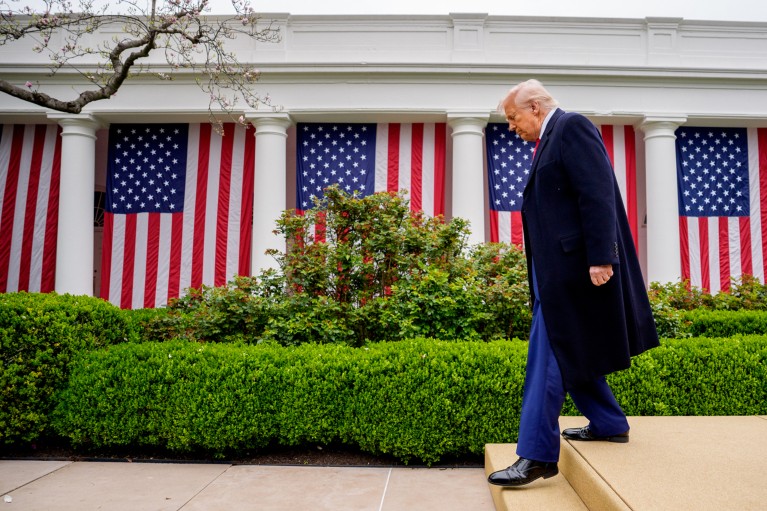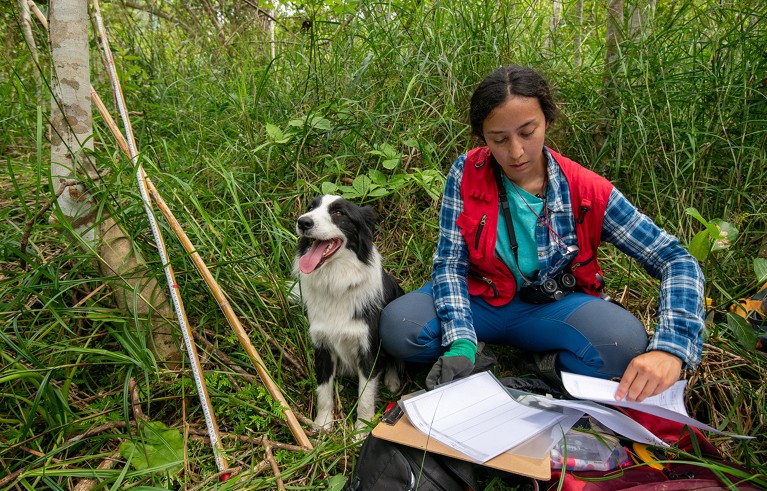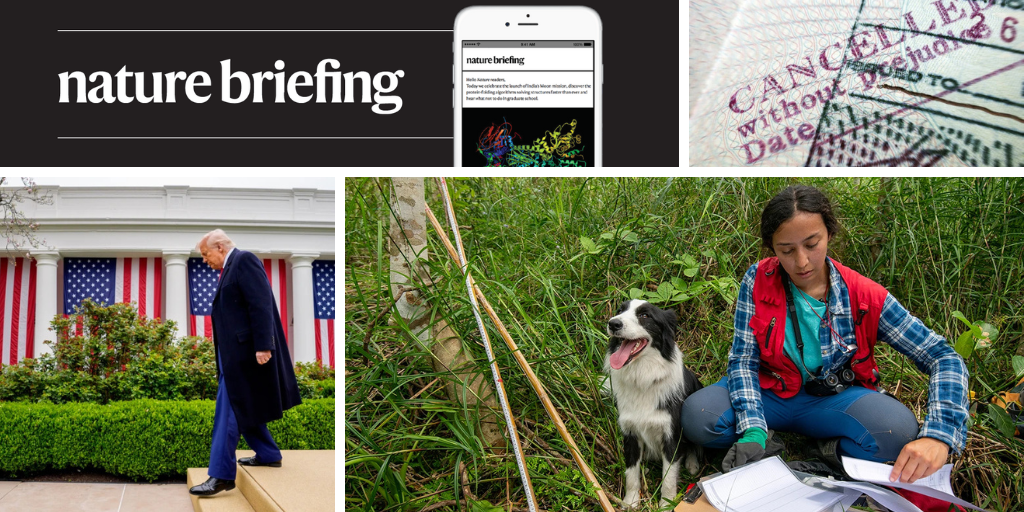You have full access to this article via your institution.
Hello Nature readers, would you like to get this Briefing in your inbox free every day? Sign up here.

US President Donald Trump has used a series of executive orders to reshape US science.Credit: Andrew Harnik/Getty
US President Donald Trump issued an expansive executive order on Thursday that, if implemented, would hand control over federal science grants to political appointees. It says that peer review — traditionally done by panels of scientists to determine which grants are funded — should be “advisory”. But appointees would ultimately decide if proposals “advance the President’s policy priorities” or are “anti-American”. It also doubles-down on the Trump administration’s efforts to restrict acceptable research topics — prohibiting, for example, grants that promote “illegal immigration”.
Read more: stay abreast of the Trump administration’s moves to assert control over US science with our coverage.
Reference: ‘Improving Oversight of Federal Grantmaking’ executive order
A huge genomewide study has unveiled tentative “genetic signals” that might help understand the risk factors underlying myalgic encephalomyelitis/chronic fatigue syndrome (ME/CFS) — a condition that affects millions of people, with symptoms such as debilitating exhaustion. In the genomes of more than 15,000 people with ME/CFS, researchers found eight genomic regions associated with the illness. The study provides “validation of ME/CFS as a biomedical condition and an important corrective to psychologizing ‘all in the mind’ perspectives on the disease”, says biopsychologist and epidemiologist Jos Bosch.
Reference: DecodeME study preprint (not peer reviewed)
China is one step closer to putting people on the Moon after successfully testing the take-off and landing capabilities of its two-person ‘Lanyue’ lunar lander, says the China Manned Space agency. Its aim is to get its first astronauts on the Moon by 2030.
Features & opinion
The Trump administration has imposed a crackdown on visas for international students in the United States, and it is not alone in pulling up the welcome mat. In recent years, governments in Canada, Australia and the United Kingdom have set their sights on reducing the numbers of international students. Critics say that, on top of creating difficulties for individual scholars, the moves mean that institutions are losing talented contributors and crucial international-student fees. “It’s so short-sighted, it’s a self-inflicted wound,” says US computational biologist John Quackenbush. Some other countries are seizing the opportunity: many universities in Japan, for example, are waiving admission fees to attract more students from abroad.
In his new book The Anthropocene Illusion, photographer Zed Nelson turns his lens on ersatz ecosystems in zoos, simulacrums of natural wonders in theme parks and tourist-clogged national parks. “The internet’s ceaseless flow of visual stimulation and information have birthed a state of unreality, where we are no longer looking for truth, but only a kind of amazement,” argues Nelson. In his view, the result is a pale imitation that alienates us from, rather than connects us to, the natural world.
Starting in 2021, archaeology PhD student Greet Jarrett spent the best part of three years making a series of unusual voyages. His transport? Nine seafaring vessels, each built in the styles of those used during the Viking Age. “The details of Viking Age trade are often limited to its origins and destinations,” says Jarrett. But he was more interested in the time in between. Joined by student and volunteer crews, Jarret made 26 trips along the Norwegian coast to gain hands-on insight into the experiences of Viking sailors.
The New York Times | 8 min read
Reference: Journal of Archaeological Method and Theory paper (from May)
Where I work

Jennifer Khattar is a forest ecologist at the University of Melbourne, Australia.Credit: Dave Tacon for Nature
Forest ecologist Jennifer Khattar studies how forests in Taiwan grow back after agricultural abandonment, often with her four-legged friend Yang Mei. “I survey for coarse, woody debris, understorey vegetation and trees. I keep my eyes open, write down everything I see and look forward to what the data will show me.” she says. Even in the heat of summer, she has to stay covered up to avoid being cut by thorns and silvergrass in the undergrowth. It’s “sweaty and uncomfortable, but I surrender to the conditions”, she says. (Nature | 3 min read)
It’s great to be back after my break; huge thanks to Jacob Smith for holding the reins while I was on holiday. This month, I’m working from beautiful British Columbia, Canada — and so is Leif Penguinson. On Friday, Leif was roaming the lush forests of Gwaii Haanas, a protected archipelago that sits off the west coast and is rich with the long history of the Haida Nation. Did you find the penguin? When you’re ready, here’s the answer.
Thanks for reading,
Flora Graham, senior editor, Nature Briefing
With contributions by Jacob Smith
• Nature Briefing: Careers — insights, advice and award-winning journalism to help you optimize your working life
• Nature Briefing: Microbiology — the most abundant living entities on our planet — microorganisms — and the role they play in health, the environment and food systems
• Nature Briefing: Anthropocene — climate change, biodiversity, sustainability and geoengineering
• Nature Briefing: AI & Robotics — 100% written by humans, of course
• Nature Briefing: Cancer — a weekly newsletter written with cancer researchers in mind
• Nature Briefing: Translational Research — covers biotechnology, drug discovery and pharma


